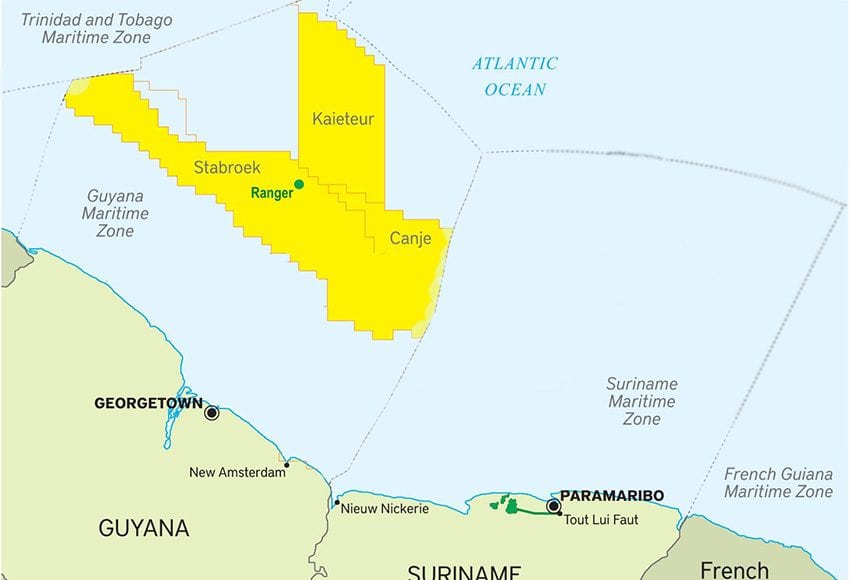Following the record-setting Ranger-1 well, ExxonMobil has continued to push the limits of deepwater exploration in Guyana’s Stabroek Block.
Ranger-1, announced in January 2018, remains the deepest discovery in the block. It was drilled to a depth of 21,161 feet (6,450 meters) and encountered approximately 230 feet (70 meters) of high-quality, oil-bearing carbonate reservoir.
Several other wells have since been drilled in significant water depths, establishing a trend of deepwater success across the Stabroek acreage. The following discoveries rank among the deepest by water depth after Ranger:
- Pacora-1 – Drilled in 6,781 feet (2,067 meters) of water, it encountered 65 feet (20 meters) of oil-bearing sandstone.
- Payara-1 – Drilled in 6,660 feet (2,030 meters) of water, it encountered more than 95 feet (29 meters) of oil-bearing sandstone.
- Tripletail-1 – Drilled in 6,572 feet (2,003 meters) of water, it encountered 108 feet (33 meters) of oil-bearing sandstone.
- Whiptail-2 – Drilled in 6,217 feet (1,895 meters) of water, it encountered 167 feet (51 meters) of net pay.
- Redtail-1 – Drilled in 6,164 feet (1,878 meters) of water, it encountered 232 feet (70 meters) of oil-bearing sandstone.
- Longtail-3 – Drilled in more than 6,100 feet (1,860 meters) of water, it encountered 230 feet (70 meters) of net pay.
- Yellowtail-1 – Drilled in 6,046 feet (1,843 meters) of water, it encountered 292 feet (89 meters) of oil-bearing sandstone.
- Fangtooth-1 – Drilled in 6,030 feet (1,838 meters) of water, it encountered 164 feet (50 meters) of oil-bearing sandstone.
- Turbot-1 – Drilled in 5,912 feet (1,802 meters) of water, it encountered 75 feet (23 meters) of oil-bearing sandstone.
- Tilapia-1 – Drilled in 5,850 feet (1,783 meters) of water, it encountered 305 feet (93 meters) of oil-bearing sandstone.
Other notable deepwater wells include Lancetfish-1 (5,843 feet), Turbot-2 (5,790 feet), and Kiru-Kiru-1 (5,760 feet).
These wells demonstrate ExxonMobil’s capacity to operate at deeper water depths offshore Guyana. Ranger-1, drilled in 2018, not only proved a new carbonate play concept but also pushed the boundaries of the company’s ultra-deepwater exploration capabilities in the region.
The company planned additional drilling at Ranger this year, President Alistair Routledge recently told the media. He said that Ranger is located in a carbonate reservoir, unlike most of the company’s other finds in sandstone formations.
Initial estimates in 2018 suggested that Ranger held 346 million barrels of oil. By 2022, this figure was revised upward to between 500 and 600 million barrels. Routledge had emphasized that ExxonMobil remains committed to fully understanding Ranger’s potential, calling it a discovery that could significantly boost Guyana’s production.



